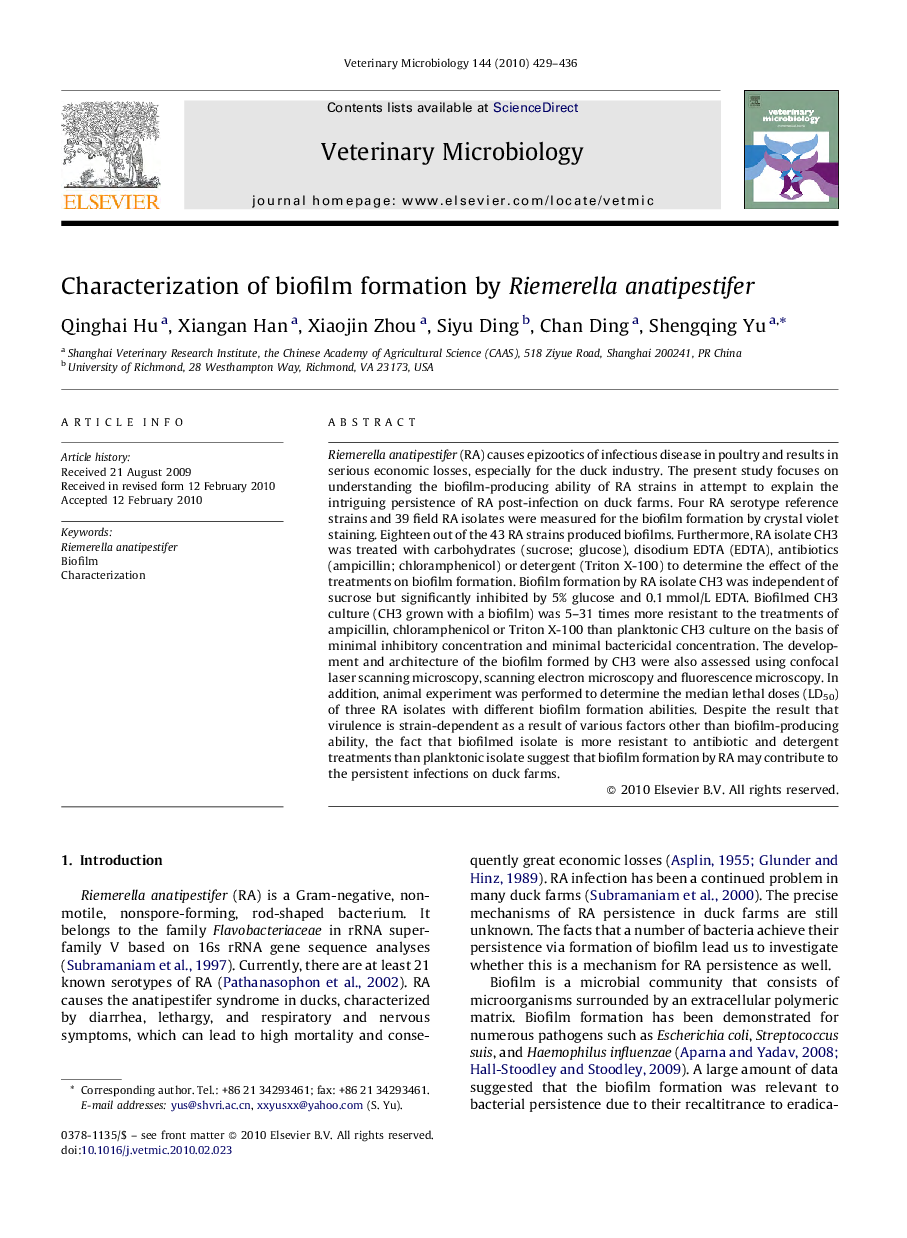| Article ID | Journal | Published Year | Pages | File Type |
|---|---|---|---|---|
| 2468037 | Veterinary Microbiology | 2010 | 8 Pages |
Riemerella anatipestifer (RA) causes epizootics of infectious disease in poultry and results in serious economic losses, especially for the duck industry. The present study focuses on understanding the biofilm-producing ability of RA strains in attempt to explain the intriguing persistence of RA post-infection on duck farms. Four RA serotype reference strains and 39 field RA isolates were measured for the biofilm formation by crystal violet staining. Eighteen out of the 43 RA strains produced biofilms. Furthermore, RA isolate CH3 was treated with carbohydrates (sucrose; glucose), disodium EDTA (EDTA), antibiotics (ampicillin; chloramphenicol) or detergent (Triton X-100) to determine the effect of the treatments on biofilm formation. Biofilm formation by RA isolate CH3 was independent of sucrose but significantly inhibited by 5% glucose and 0.1 mmol/L EDTA. Biofilmed CH3 culture (CH3 grown with a biofilm) was 5–31 times more resistant to the treatments of ampicillin, chloramphenicol or Triton X-100 than planktonic CH3 culture on the basis of minimal inhibitory concentration and minimal bactericidal concentration. The development and architecture of the biofilm formed by CH3 were also assessed using confocal laser scanning microscopy, scanning electron microscopy and fluorescence microscopy. In addition, animal experiment was performed to determine the median lethal doses (LD50) of three RA isolates with different biofilm formation abilities. Despite the result that virulence is strain-dependent as a result of various factors other than biofilm-producing ability, the fact that biofilmed isolate is more resistant to antibiotic and detergent treatments than planktonic isolate suggest that biofilm formation by RA may contribute to the persistent infections on duck farms.
